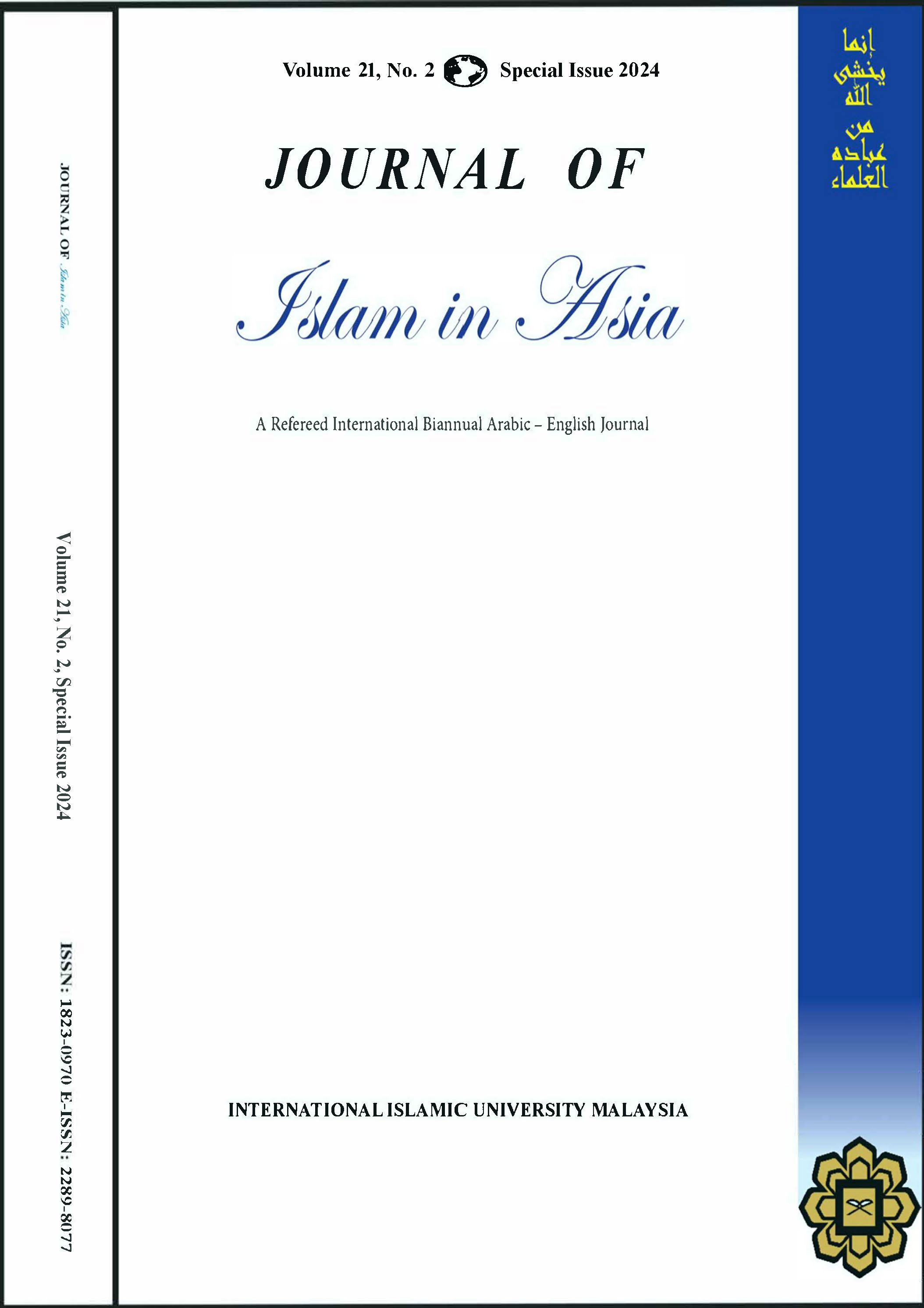Representation of Islamic Thought and Civilisation at International Islamic University Malaysia Through Semiotics: An Analysis
DOI:
https://doi.org/10.31436/jia.v21i2.1256Keywords:
Semiotics, Islamic Thought, Signs, Message, Civilisation, MalaysiaAbstract
Signs, logos, and images have their languages, through which some hidden and cryptic message is delivered to society. Signs represent vision, philosophy, and value of thought in any context to guide society in conveying a message. This paper analyses Islamic thought and civilisation at the International Islamic University Malaysia through semiotic representation and its implementation. The data in images, signs, and logos were taken from IIUM. The data is analysed semiotically in all aspects and discussed to see to which extent these are related to Islamic thoughts and civilisation. The study’s findings suggest that IIUM has deliberately utilised semiotics to deliver Islamic thoughts and ideas to the University. This research would significantly contribute to a knowledge reservoir regarding semiotics, particularly for government institutions, NGOs, and other organisations who intend to adopt semiotics for any message delivery. So, we can say that, like other languages, semiotics is a medium for delivering a meaningful message. History shows that ancient civilisations adopted a similar method to deliver their thoughts and messages. We can see the symbols, signs, and logos in the remains of ancient civilisations.
References
Al-Qur’an
Berghout, Abdelaziz. “An Islamic Model of Civilization Development and Sustainability: A Maqasidic Approach.” In Spirituality and Sustainability: Experiences of the International Islamic University Malaysia, edited by Abdul Rashid Moten, Chapter 3, 54. Kuala Lumpur: IIUM Press, 2020.
Chou, E. I., B. bin Mohd Arus, and S. Ahmad. “A Semiotic Analysis and Cultural Values of Malaysian Automotive TV Advertisements.” Jurnal Gendang Alam 7 (2017).
Culler, J. “In Pursuit of Signs.” Daedalus 106, no. 4 (1977): 95–111.
De Saussure, J. "Ferdinand de Saussure (1857–1913)." La Gazette de Lausanne, 1915.
Hassan, M. Kamal, and Nur Jannah Hassan. “Holistic Education for Sustainable Development: Concluding Observations.” In Spirituality and Sustainability: Experiences of the International Islamic University Malaysia, edited by Abdul Rashid Moten, Chapter 17, 272. Kuala Lumpur: IIUM Press, 2020.
Holdcroft, D. Saussure: Signs, System and Arbitrariness. Cambridge: Cambridge University Press, 1991.
Holdcroft, D. Saussure: Signs, System and Arbitrariness. Cambridge: Cambridge University Press, 1991.
Jessop, B. “Critical Semiotic Analysis and Cultural Political Economy.” Critical Discourse Studies 1, no. 2 (2004): 159–174.
Labbo, L. D. “A Semiotic Analysis of Young Children’s Symbol Making in a Classroom Computer Center.” Reading Research Quarterly 31, no. 4 (1996): 356–385.
Lloyd, Barbara, and Greg Duveen. “A Semiotic Analysis of the Development of Social Representations of Gender.” In Social Representations and the Development of Knowledge, edited by Greg Duveen and Barbara Lloyd, 27–46. Cambridge: Cambridge University Press, 1990.
Matus, P. “Discursive Representation: Semiotics, Theory, and Method.” Semiotica 225 (2018): 103–127.
Saad, Mohd Naim, and Nor Aida Mohd Nor. “The Influence of Islamic Symbols and Elements among Malaysia University Logos.” Malaysian Journal of Communication 36, no. 3 (2020): 153–172.




